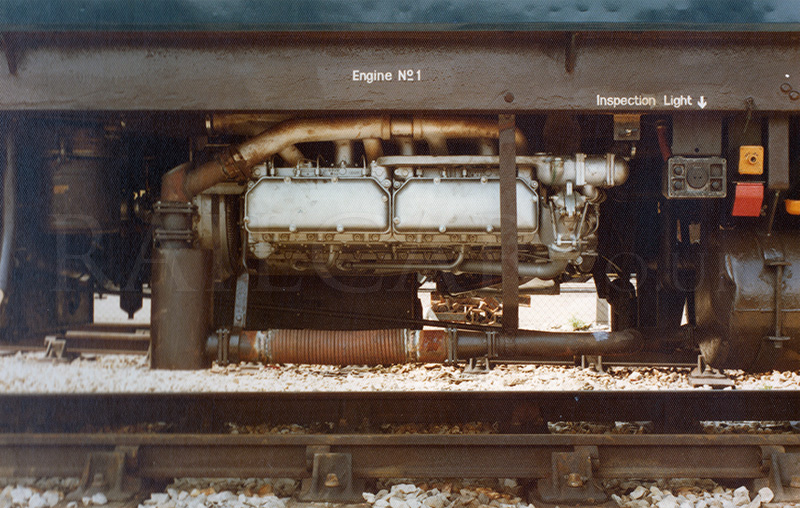DMU Engines
Introduction
Almost all DMU power cars had two underfloor mounted engines, each driving the inner axle on the closest bogie.

There were five main types used:
- AEC 220 (150hp)
- Leyland 680 (150hp)
- Leyland Albion (230hp)
- Rolls Royce C6 (180hp)
- Rolls Royce C8 (238hp)
There were a variety of other types used in small numbers:
- AEC 219 (125hp) - the ACV railcars
- Buessing (150hp) - the five Waggon und Maschinenbau railbuses
- Gardner (112hp) - the two Bristol CV/Eastern CW railbuses
- Leyland 600 (125hp) - the West Riding Derby Lightweights
- Meadows (105hp) - the six Wickham railbuses: five passenger and the Elliot Track Recorder
The Blue Pullman had a NBL/MAN 1000hp diesel electric arrangement more akin to a diesel locomotive but also had Rolls Royce C8 engines for auxiliary power.
The railbuses only had one engine per vehicle, as did two types of DMUs — the Cravens Class 112 and 113s.
Many engines were sold and badged under the "British United Traction" (BUT) brand, a collaboration between AEC and Leyland.
On each power car engines were labelled as "Engine No.1" and "Engine No.2". Number one was on the number one side of the vehicle — the side on which the driver sat — and drove the front bogie. Number two was on the opposite side and drove the rear bogie.
The Cravens Rolls-Royce sets (Classes 112/3) had just one engine per power car, and the railbuses had just one engine. In the 1980s one Class 104 and a batch of Class 111s had one engine removed from each power car.
In the 1970s were was a re-enginning programme to reduce the number of AEC engines, they were replaced by Leyland 680s - both were 150hp engines with the same mountings.


